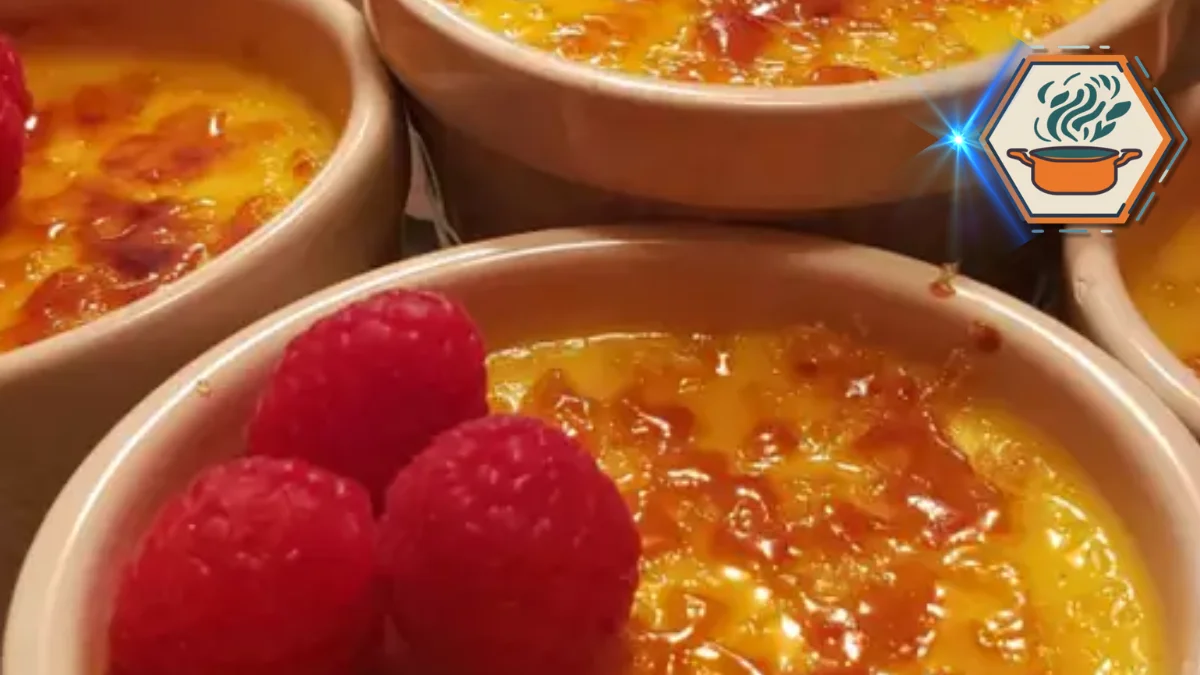Crème Brûlée and Custard are two iconic desserts that hold a special place in the culinary world, celebrated for their smooth texture, rich flavor, and versatility. Whether served as a standalone dessert or used as a base in more elaborate creations, custards have become a staple in both home kitchens and high-end patisseries.
For a deeper dive into crafting professional-level desserts, check out our guide on perfecting custard textures.
Table of Contents
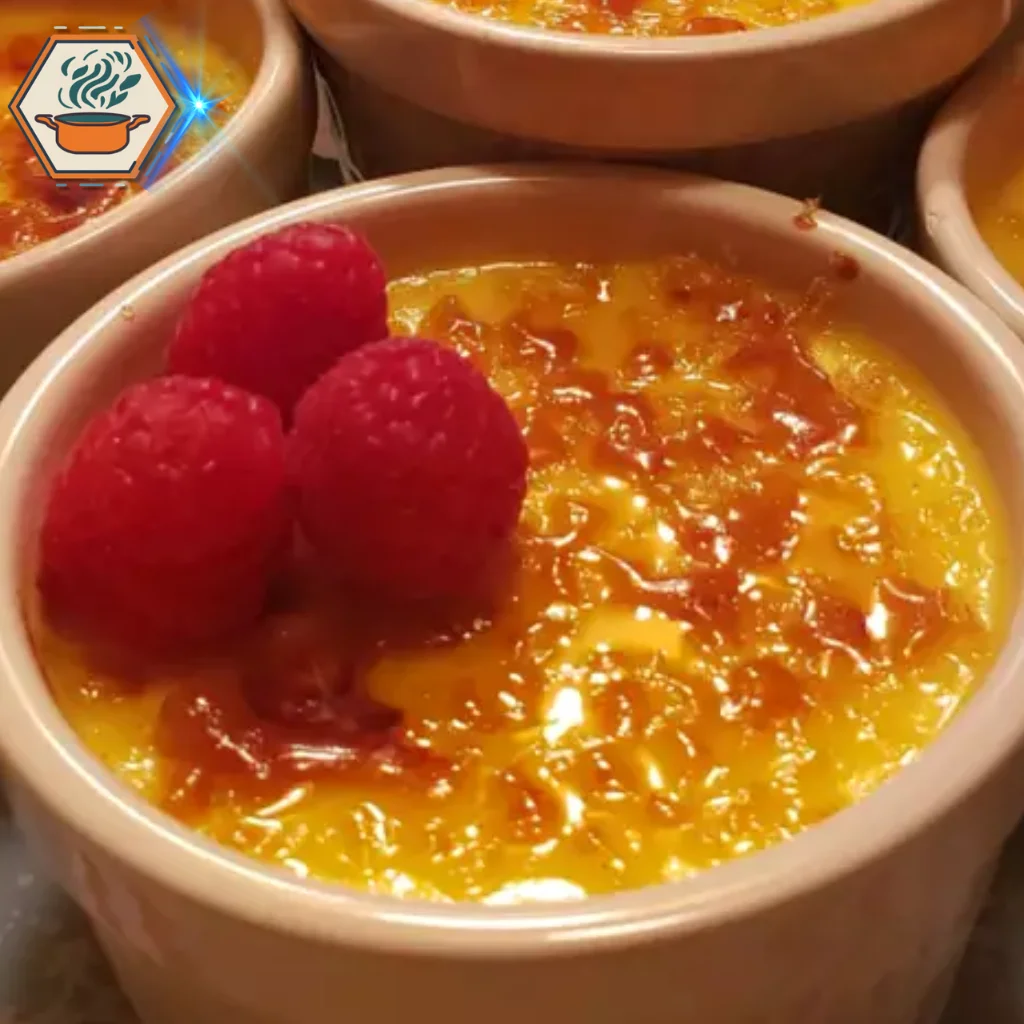
A Brief History of Crème Brûlée and Custard
Crème Brûlée and Custard-based desserts trace their origins to medieval Europe, where cooks combined eggs, milk, and sweeteners to create versatile fillings for pastries. Over time, the technique evolved, with regional variations reflecting local ingredients and culinary traditions.
In France, custards took on a luxurious flair, particularly with the invention of crème brûlée. Meanwhile, in England, custard was often baked or served alongside fruit pies. This versatility solidified its place in global cuisine, where it remains a symbol of indulgence and comfort.
Learn more about custard’s rich history through a detailed exploration on Wikipedia.
Why Are These Desserts So Popular?
The universal appeal of Crème Brûlée and Custard lies in their creamy textures and rich flavors, which have captivated dessert lovers worldwide:
- Creamy Texture: The silky smoothness of custards is unmatched, providing a satisfying mouthfeel.
- Flavor Versatility: From vanilla to citrus to chocolate, custards pair well with various flavor profiles.
- Ease of Preparation: While they require attention to technique, the basic ingredients—milk, eggs, and sugar—are widely accessible.
- Elegant Presentation: Desserts like crème brûlée often feature visually stunning finishes, such as caramelized tops, making them perfect for special occasions.
What Is Crème Brûlée?
Definition and Key Characteristics
Crème brûlée is a decadent French dessert that showcases the elegance of Crème Brûlée and Custard, with a rich custard base topped with caramelized sugar. The hallmark of this dessert is the delightful contrast between the creamy custard and the brittle, caramelized top, which is traditionally achieved using a culinary torch.
Origins and Culinary Heritage
The origins of crème brûlée are debated, with France, England, and Spain all claiming ties to its invention. While the French version is most famous, the dessert bears similarities to the Spanish crema catalana and the English burnt cream. Regardless of its roots, crème brûlée has become synonymous with French fine dining and dessert craftsmanship.
Ingredients Used in Crème Brûlée
A classic crème brûlée requires only a few ingredients:
- Heavy cream
- Egg yolks
- Sugar (for the custard and caramelized top)
- Vanilla extract or beans for flavoring
Some variations incorporate citrus zest, coffee, or liqueurs to enhance the flavor profile, but the essence of crème brûlée lies in its simplicity.
To select high-quality ingredients, read our guide on choosing the best vanilla extract.
What Is Custard?
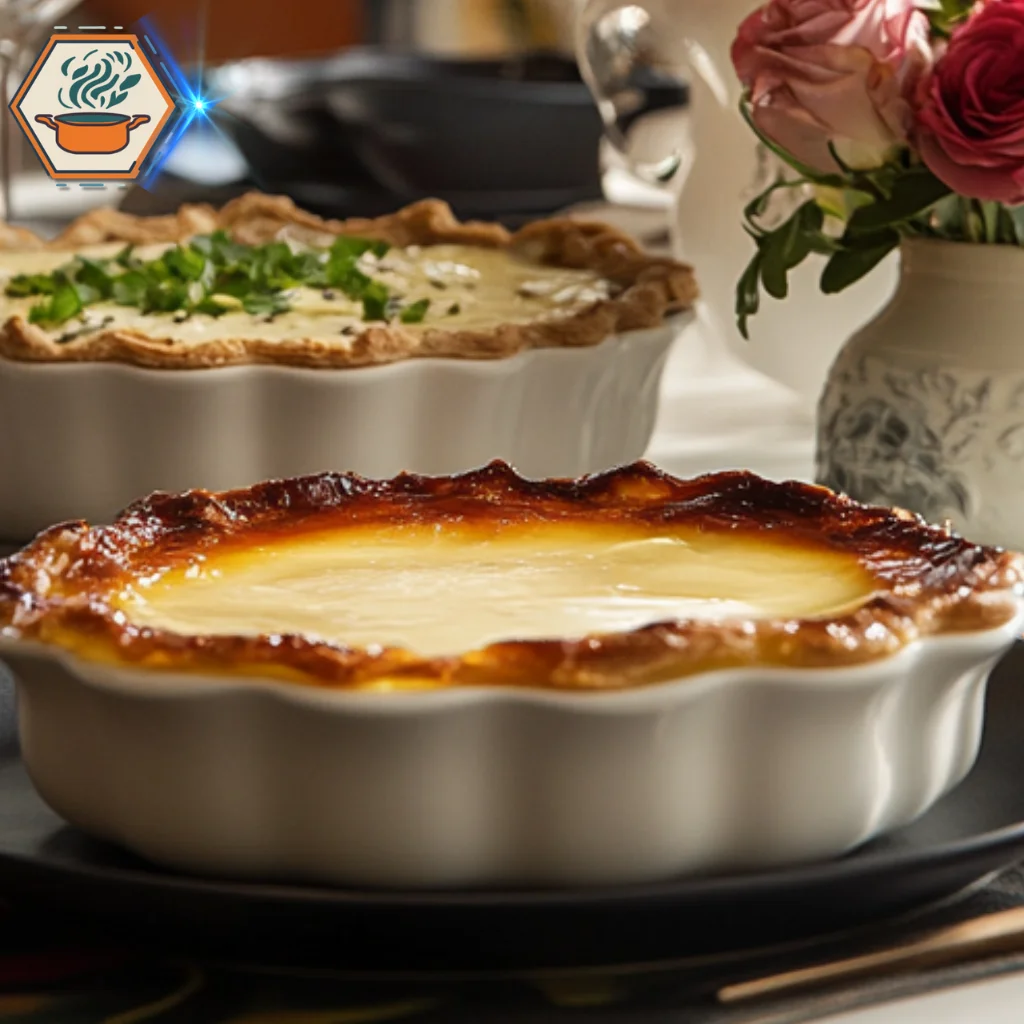
Definition and Different Variations
Custard is a mixture of milk (or cream) and eggs, sweetened or unsweetened, cooked gently to create a thick, creamy consistency. Custards are incredibly versatile and can be classified into:
- Baked Custards: Cooked in a water bath for a firm texture (e.g., flan, crème brûlée).
- Stirred Custards: Cooked on a stovetop for a pourable consistency (e.g., pastry cream, anglaise).
- Set Custards: Thickened with additional starches or gelatin for added structure (e.g., panna cotta).
For more on the variations of custards, visit our detailed breakdown of custard types.
Historical Background and Cultural Significance
Custards have been a cornerstone of desserts in Europe and beyond, featured prominently in medieval royal feasts and as comfort food in households. Their cultural significance extends to regions like Asia, where variations like steamed egg custard are popular.
The adaptability of custards has allowed them to transcend culinary boundaries, appearing in savory dishes like quiches and sweet treats like puddings.
Common Ingredients Found in Custards
Though variations exist, the foundational ingredients of custard include:
- Milk or cream
- Eggs (whole eggs or yolks)
- Sugar (in sweet versions)
- Flavorings such as vanilla, nutmeg, or cinnamon
Starch may be added for stabilization in certain recipes, and savory versions often exclude sugar altogether.
Key Differences Between Crème Brûlée and Custard
Understanding the nuanced differences between crème brûlée and custard can enhance your culinary expertise. While both share foundational ingredients like eggs, milk, and sugar, they diverge significantly in texture, preparation methods, flavors, and presentation.
Texture and Consistency
How Crème Brûlée Achieves Its Signature Silky Texture
The defining characteristic of crème brûlée is its ultra-silky, creamy texture. This is achieved by baking the custard in a water bath, which ensures even heat distribution and prevents overcooking. The addition of heavy cream instead of milk gives crème brûlée its distinct richness.
Variations in Custard Textures: Light to Dense
Custards are versatile in texture, ranging from the light and velvety crème anglaise to the denser textures of baked custards like flan or tart fillings. The consistency is determined by the egg-to-liquid ratio and the cooking technique—whether baked, steamed, or stovetop-cooked.
For more information about custards, check out the Custard article on Wikipedia.
Cooking Techniques
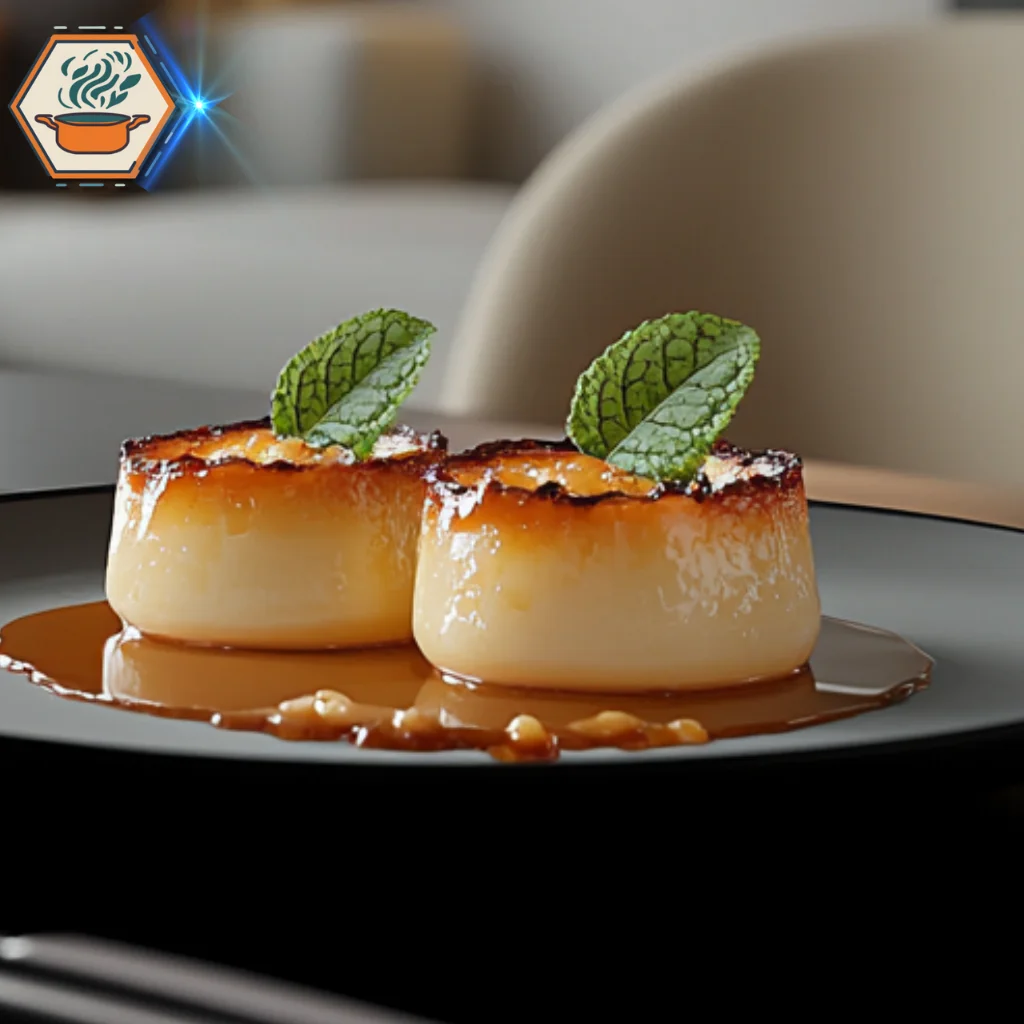
Torch-Browned Sugar Topping in Crème Brûlée
A key feature of crème brûlée is its caramelized sugar topping. After the custard has cooled, a thin layer of sugar is sprinkled on top and torched to create a glossy, brittle crust. This provides a satisfying textural contrast to the creamy base.
Baking vs. Stovetop Techniques in Custards
Custards offer flexibility in preparation:
- Baking: Ideal for firm custards like quiches and flans, where gentle heat stabilizes the mixture.
- Stovetop Cooking: Used for lighter, pourable custards such as crème anglaise or pudding, requiring constant stirring to prevent curdling.
Flavor Profiles and Serving Styles
Signature Flavors in Crème Brûlée: Vanilla, Caramelized Sugar
The classic crème brûlée is infused with vanilla, often derived from fresh vanilla beans, which pairs harmoniously with the caramelized sugar crust. This elegant combination makes it a crowd favorite.
Diverse Flavors and Enhancements in Custards
Custards offer endless flavor possibilities, including:
- Chocolate and mocha
- Citrus like lemon or orange
- Spices such as cinnamon or cardamom Their adaptability makes custards suitable for a variety of desserts, from pies to éclairs.
Nutritional Comparison
| Nutrient | Crème Brûlée (per serving) | Custard (per serving) |
|---|
| Calories | 350 | 250 |
| Total Fat (g) | 25 | 12 |
| Saturated Fat (g) | 15 | 7 |
| Cholesterol (mg) | 250 | 150 |
| Sugar (g) | 25 | 18 |
| Protein (g) | 5 | 6 |
| Sodium (mg) | 35 | 40 |
| Carbohydrates (g) | 30 | 22 |
Calories, Sugar Content, and Serving Sizes
When comparing crème brûlée and custards, crème brûlée is typically richer due to its heavy cream content and caramelized sugar topping. Custards can be lighter, especially when made with milk or reduced sugar.
Are They Healthy Desserts?
Both desserts lean toward indulgence rather than health-conscious options. However, custards made with low-fat milk or alternative sweeteners can be a lighter choice. Crème brûlée remains a luxurious treat, best enjoyed occasionally.
Presentation and Usage
The Role of Crème Brûlée as a Showstopper Dessert
Crème brûlée is renowned for its visual appeal and sophisticated presentation, served in individual ramekins with a crackling caramelized sugar top. It is a showstopper dessert often found in upscale restaurants and celebrations.
How Custards Are Used in Pies, Pastries, and More
Custards, in contrast, are versatile ingredients that can be used as fillings for:
Ice cream bases Their adaptability makes them a staple in both everyday and gourmet recipes.
Cream pies
Tarts
Napoleons
Exploring the Culinary World of Crème Brûlée and Custard
Crème brûlée and custard are beloved desserts with rich histories and versatile culinary applications. Both share common roots in creamy, egg-based mixtures but differ significantly in texture, preparation, and presentation. Let’s delve into the world of these timeless desserts, exploring their unique characteristics, variations, and even innovative twists like the savory crab brûlée recipe.
Famous Variations of Crème Brûlée and Custard
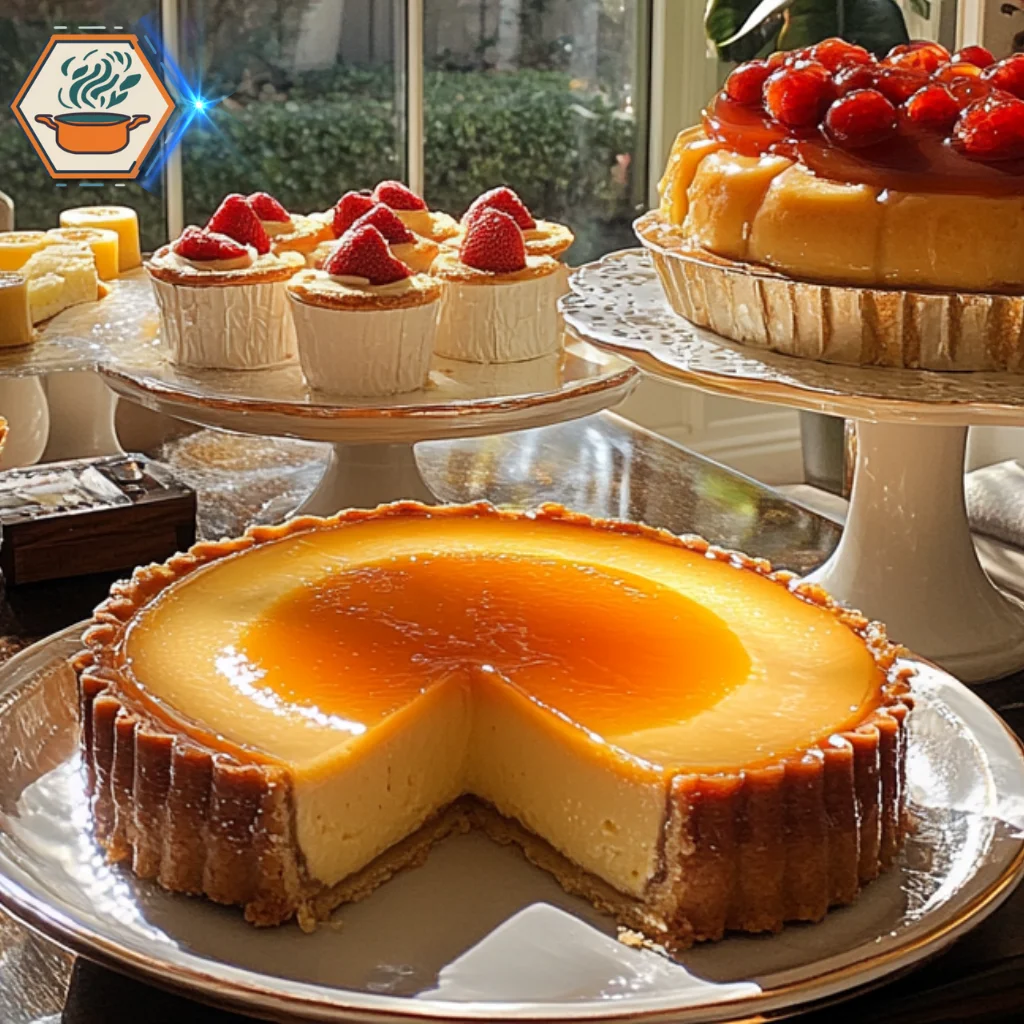
Lavender Crème Brûlée and Chocolate Crème Brûlée
Crème brûlée is a canvas for creativity, with endless possibilities for flavor infusions:
- Lavender Crème Brûlée: A floral take that balances the creaminess with subtle, fragrant notes. Lavender buds are steeped in the cream for an aromatic experience.
- Chocolate Crème Brûlée: A decadent choice for chocolate lovers, blending bittersweet chocolate into the custard base before baking.
Flan, Pastry Cream, and Other Custard Derivatives
Custard serves as the foundation for numerous desserts:
- Flan: Known for its silky texture and caramel topping, flan is a cousin of crème brûlée but often steamed instead of baked.
- Pastry Cream: A thicker, stovetop-cooked custard used in tarts, éclairs, and cakes.
- Other Derivatives: Think of clafoutis, bread pudding, or even custard-based ice creams.
For more about the origins of custards, explore this detailed guide on Wikipedia.
Crème Brûlée and Custard Recipe
Taking a savory spin on a traditionally sweet dessert, crab brûlée showcases how versatile this dish can be. Perfect for adventurous cooks looking to impress at dinner parties, this recipe combines creamy custard with the delicate flavor of crab.
Step-by-Step Guide to Preparing a Unique Crab Brûlée
Ingredients:
- 200g fresh crab meat
- 2 cups heavy cream
- 3 egg yolks
- 1 tsp Dijon mustard
- A pinch of cayenne pepper
- Salt and pepper to taste
- Sugar (for caramelizing)
Instructions:
- Prepare the Custard Base: Whisk egg yolks, cream, mustard, cayenne, salt, and pepper until smooth.
- Incorporate the Crab: Gently fold in crab meat to preserve its texture.
- Bake in a Water Bath: Divide the mixture into ramekins, place them in a baking dish filled with hot water, and bake at 160°C (320°F) for 25-30 minutes.
- Caramelize the Sugar: Once baked and slightly cooled, sprinkle sugar on top and caramelize using a torch or broiler.
Tips for Perfecting This Savory Take on a Classic Dessert
- Use fresh crab meat for the best flavor.
- Avoid overbaking; a slight jiggle in the center indicates it’s ready.
- Experiment with spices like paprika or herbs like dill for added depth.
Tips and Tricks for Home Cooks
Tools Needed for Crème Brûlée: Torches, Ramekins, and More
To achieve that signature caramelized crust and velvety custard, you’ll need:
- Ramekins: Essential for individual portions.
- Kitchen Torch: For precise sugar caramelization.
- Fine-Mesh Strainer: To ensure a smooth custard mixture.
Avoiding Common Custard Mistakes: Curdling and Overcooking
- Prevent Curdling: Use a water bath to stabilize the baking process and maintain even temperatures.
- Avoid Overcooking: Remove custards from the oven when the edges are set but the center jiggles slightly.
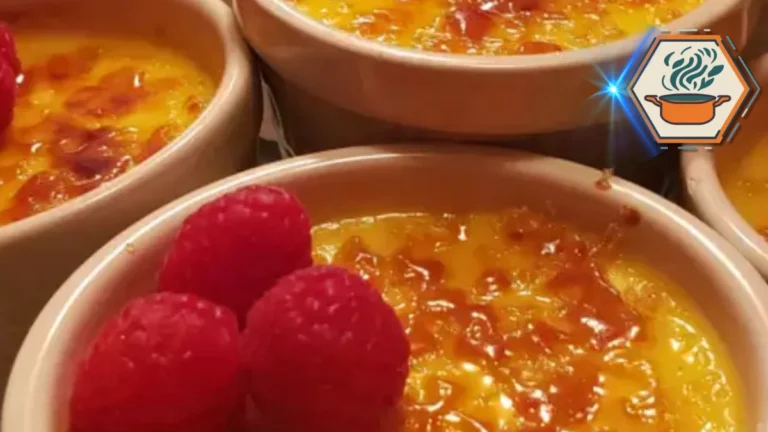
Crème Brûlée: A Timeless French Classic
Crème Brûlée is a luxurious French dessert with a creamy custard base and a caramelized sugar topping. Perfect for special occasions or indulgent treats, this dessert is both elegant and surprisingly simple to prepare.
- Total Time: 55 minutes
- Yield: 4 servings
Ingredients
- 2 cups heavy cream
- 5 large egg yolks
- ½ cup granulated sugar (plus extra for caramelizing)
- 1 tsp vanilla extract or 1 vanilla bean (split and scraped)
Instructions
- Preheat Oven: Preheat your oven to 325°F (160°C).
- Heat Cream: In a saucepan, heat the heavy cream over medium heat until it starts to steam (do not boil). Remove from heat and stir in the vanilla extract or vanilla bean.
- Prepare Egg Mixture: In a mixing bowl, whisk egg yolks and granulated sugar until pale and creamy.
- Combine: Slowly pour the warm cream into the egg mixture while whisking continuously to avoid cooking the eggs. Strain the mixture through a fine-mesh sieve to remove any lumps.
- Bake in Water Bath: Divide the custard mixture into ramekins. Place ramekins in a baking dish and pour hot water into the dish until it reaches halfway up the sides of the ramekins. Bake for 30–40 minutes, or until the edges are set but the centers slightly jiggle.
- Cool: Remove ramekins from the water bath and let them cool to room temperature. Cover and refrigerate for at least 2 hours or overnight.
- Caramelize Sugar: Just before serving, sprinkle a thin, even layer of sugar over the top of each custard. Use a kitchen torch to caramelize the sugar until golden and crisp. Let the sugar cool for 1 minute before serving.
Notes
- Ensure the custard is baked until slightly jiggly in the center for the perfect texture.
- Use high-quality vanilla for the best flavor.
- A kitchen torch provides the best caramelized topping, but a broiler can work in a pinch.
- Prep Time: 15 minutes
- Cook Time: 40 minutes
- Category: Dessert
- Method: Baking
- Cuisine: French
- Diet: Vegetarian
FAQs
1. What is the biggest difference between Crème Brûlée and Custard?
The primary difference between Crème Brûlée and Custard is the caramelized sugar topping found on crème brûlée. Traditional custard dishes may be baked or stirred, but they usually don’t have the signature torch-browned sugar crust that crème brûlée is famous for.
2. Can I use low-fat milk or dairy alternatives when making Crème Brûlée and Custard?
Yes, you can substitute low-fat milk or dairy alternatives, but keep in mind that Crème Brûlée and Custard rely on a high fat content for their signature rich texture. Using reduced-fat or plant-based milks may result in a thinner consistency, so you might need to adjust cooking times or add a thickener like cornstarch.
3. Are Crème Brûlée and Custard considered classic French desserts?
While custard has culinary roots in various regions, Crème Brûlée and Custard are strongly associated with French cuisine. Crème brûlée is often served in upscale French restaurants, and many classic French pastry recipes include custard components, such as crème anglaise or pastry cream.
4. Can I flavor Crème Brûlée and Custard with fruit purees or extracts?
Absolutely! Crème Brûlée and Custard are highly adaptable. You can infuse them with flavors like raspberry puree, chocolate, citrus zest, or even floral elements like lavender. Just be mindful of the additional liquid you’re adding, and adjust the recipe accordingly to maintain the ideal consistency.
5. Why are Crème Brûlée and Custard often baked in a water bath?
Baking Crème Brûlée and Custard in a water bath (bain-marie) ensures gentle and even heat distribution. This method prevents the egg-based mixture from curdling or overcooking, giving you that luxuriously smooth texture both desserts are known for.
6. What tools do I need to make Crème Brûlée and Custard at home?
When making Crème Brûlée and Custard, essential tools include:
Ramekins or oven-safe dishes
A kitchen torch for caramelizing sugar (for crème brûlée)
A fine-mesh strainer to remove any lumps
A baking dish for creating a water bath
These tools help you achieve consistently creamy results.
7. Can I freeze leftover Crème Brûlée and Custard?
Freezing Crème Brûlée and Custard is possible, but the texture may suffer once thawed. Custard-based desserts can become grainy if frozen for too long. If you do freeze them, thaw slowly in the refrigerator to retain as much creaminess as possible, and consider re-torching the sugar on crème brûlée right before serving.
8. Is there a vegan way to make Crème Brûlée and Custard?
Yes, vegan versions of Crème Brûlée and Custard use plant-based milks (like coconut or almond milk) and thickeners such as cornstarch or agar-agar. For a brûlée-style topping, you can still caramelize sugar on top with a kitchen torch, creating a similar texture to the classic version.
Conclusion and Final Thoughts
Why Both Desserts Deserve a Place in Your Kitchen
Crème brûlée and custard are m
ore than just desserts—they’re culinary experiences. Whether you savor the crack of caramelized sugar or the silky smoothness of custard, both offer a taste of indulgence.
Experimenting with Flavors and Customizing Your Recipes
From lavender crème brûlée to crab brûlée, these dishes inspire creativity. Don’t hesitate to experiment with spices, herbs, and even savory elements to craft a unique dessert or appetizer for any occasion.

